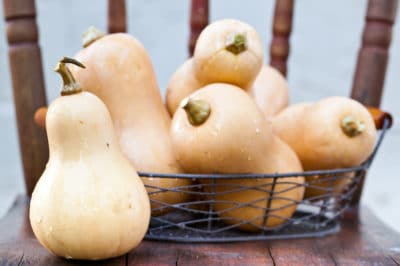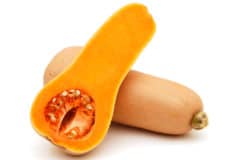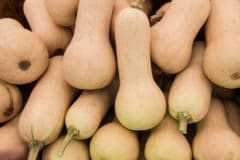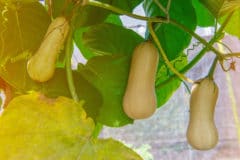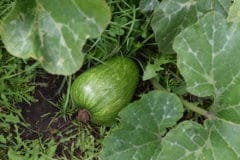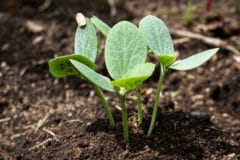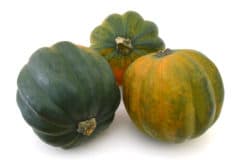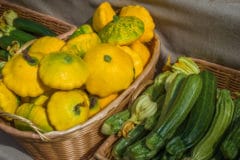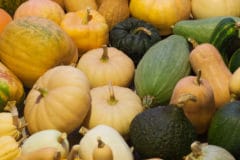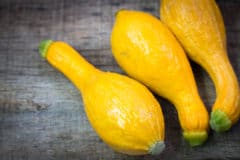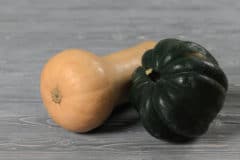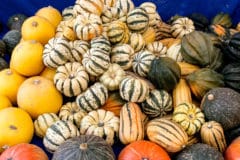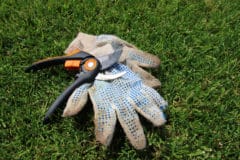Choose the Right Squash to Store
When it comes to overwintering your butternut squash, you need to be sure to choose only the best. For example, you can eat a butternut squash with small cuts or bruises when it is fresh, but it will not store well. The same applies to squash fruits without a stem; eaten fresh, the lack of stem is no problem, but without one bacteria can quickly enter the squash and cause decay.
To be sure you are storing the best squashed of your harvest, look for the following:
- Smooth, unblemished skin with no bruises, dents or cuts.
- A stem that is at least 1-2 inches (2.5-5 cm) long.
- A uniform tan color with no green or yellow spots.
- A dense, heavy feel and a hollow sound when tapped.
Prepare the Squash for Storage
Once you have singled out the best specimens for storage, brush any dirt or garden debris off each one. Then, wash each one with an organic antibacterial soap or a weak bleach and water solution. Cleaning the squash will kill any bacteria that might be on the rind.
As you wash, dry each one thoroughly and set aside. Once all of the squashes are clean and dry, you can transfer them to your storage area.
Where to Store Butternut Squash
Preparing your storage area is an integral part of the process of growing and harvesting butternut squash. You need to pick a dark area that maintains a steady temperature between 50-55°F (10-13°C ). Most people use a basement for storage, but you can use a closet, an insulated garage, or even a small shed, as long as you can maintain the right temperature.
Be sure to place the squash close together, but not touching. This provides enough airflow to prevent the fruits from spoiling. Additionally, put the squash on a layer of newspaper or cardboard instead of directly on a concrete floor.
Tip: Inspect your butternut squash regularly and pull out any that have started to soften or decay. One spoiled squash can quickly ruin the entire harvest.
Storing Butternut Correctly is Key
As long as you provide the right conditions for storing your butternut squash and take the time to prepare them correctly for storage, you can easily eat butternut squash well into the early spring. The extended storage life is one of the reasons growing butternut squash is so popular!
